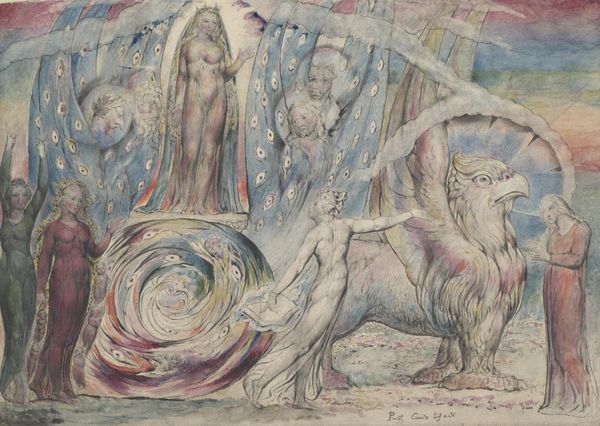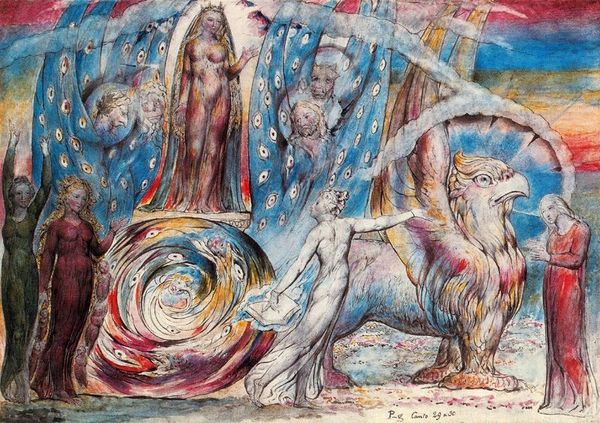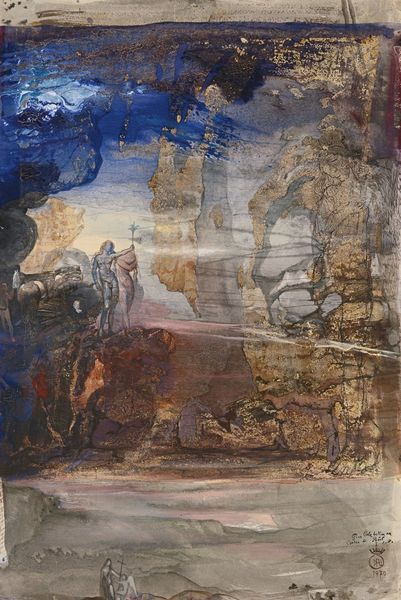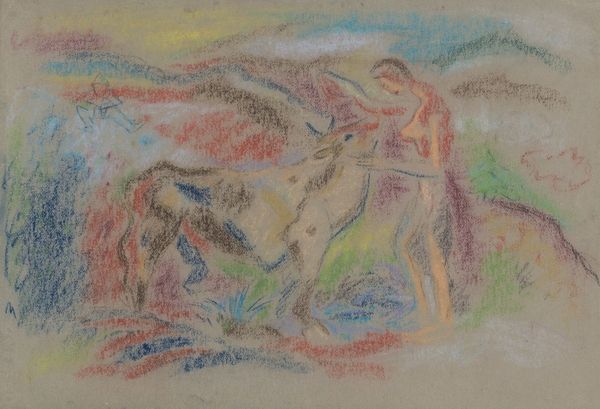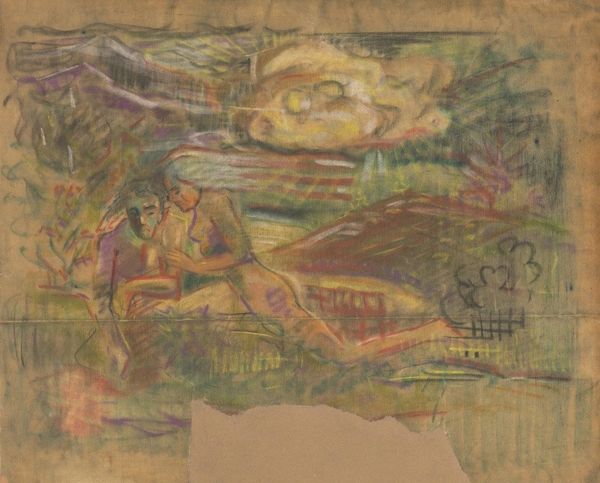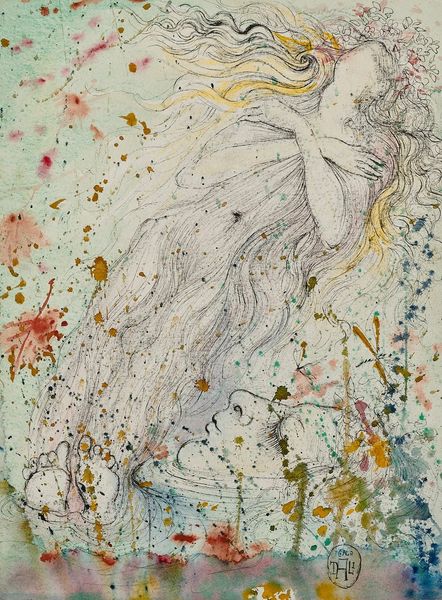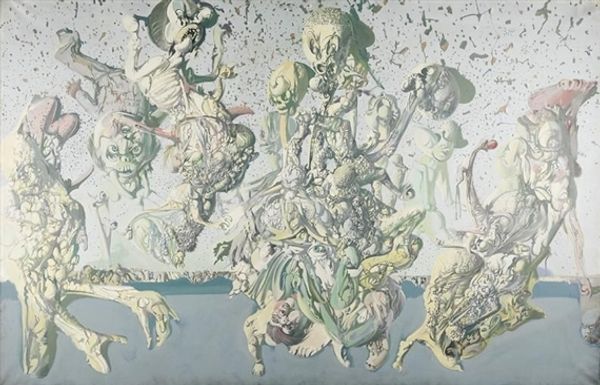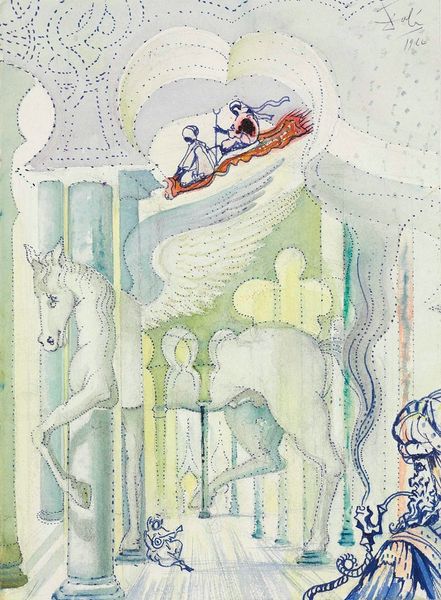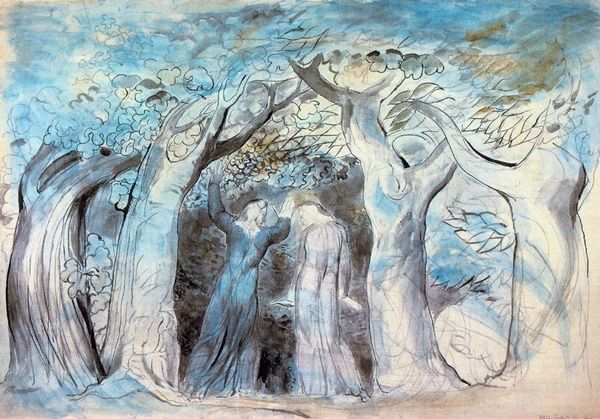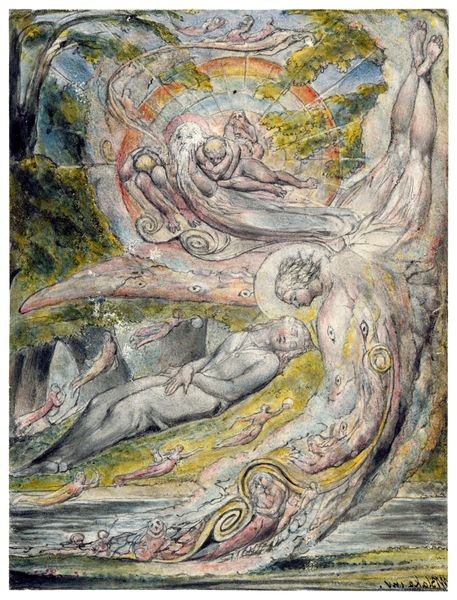
Dimensions: support: 372 x 527 mm
Copyright: CC-BY-NC-ND 4.0 DEED, Photo: Tate
Editor: This is William Blake's "Beatrice Addressing Dante from the Car." The watercolor feels otherworldly and a bit unsettling with its pale figures. What compositional elements stand out to you? Curator: The swirling vortex dominates, acting as a fulcrum against the rectilinear geometry of the figures and griffin. Note the strategic placement of eyes; they are not merely representational but structural, guiding our gaze. Editor: It's a bit unnerving, all those eyes! Curator: Indeed, consider the contrast between the static, idealized figures and the dynamic, almost chaotic, vortex. How does that tension inform your understanding? Editor: It makes me think about the contrast between the earthly and the divine. Thanks, that gives me a lot to consider. Curator: My pleasure; such formal tensions are central to Blake's visionary language.
Comments
tate 8 months ago
⋮
http://www.tate.org.uk/art/artworks/blake-beatrice-addressing-dante-from-the-car-n03369
Join the conversation
Join millions of artists and users on Artera today and experience the ultimate creative platform.
tate 8 months ago
⋮
At the end of The Divine Comedy, Dante is guided through Heaven by Beatrice, his ideal woman. Here she is surrounded by the four apostles, depicted as embodiments of the symbolic animals with which they are traditionally associated. Luke resembles an ox, a creature Lavater described as severe and simple, while Mark appears as a lion, which Lavater saw as strong and bold. John has the face of an eagle, which, according to Lavater, means he ‘must be a brave man’. Matthew is shown as a man with idealised, Christ-like features that seem to echo those of Beatrice. Gallery label, March 2011
